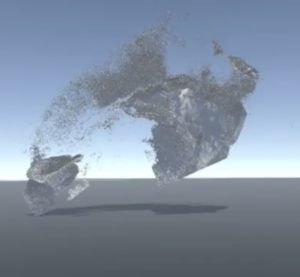 Researchers at RENCI are using xDCI Data CyberInfrastructure to manage brain microscopy images that were overwhelming the storage capacity at individual workstations.
Researchers at RENCI are using xDCI Data CyberInfrastructure to manage brain microscopy images that were overwhelming the storage capacity at individual workstations.
“BRAIN-I is a computational infrastructure for handling these huge images combined with a discovery environment where scientists can run applications and do their analysis,” explained Mike Conway, a senior data science researcher at RENCI. “BRAIN-I deals with big data and computation in a user-friendly way so scientists can concentrate on their science.”
The BRAIN-I system takes the 3D microscopy images and replicates that data onto a server at RENCI that runs the integrated Rule Oriented Data System (iRODS). Once ingested into an iRODS data grid, the data is validated, metadata tags are assigned to it and relevant inputs and processes are documented to provide an historical record of the data and its origins.
Using iRODS, each image can be linked to its biological sample, tracked from its creation in the lab through final analysis, and made discoverable and reproducible for future research.
In this video from the BRAIN-I project, we see a preliminary image of half of a mouse brain where each dot represents a specific type of neuron, called an inhibitory neuron.
Currently, the computational analysis takes place on a RENCI high performance computing system equipped with three Nvidia TeslaGPUs, which greatly speeds up the time of data processing.
When you put a GPU in a server it’s about 20 times faster than a typical computing cluster without GPU nodes for certain types of computations,” said Erik Scott, a RENCI senior research software developer. “That is why so many clusters today include GPU nodes.”




